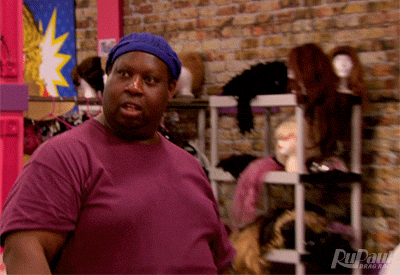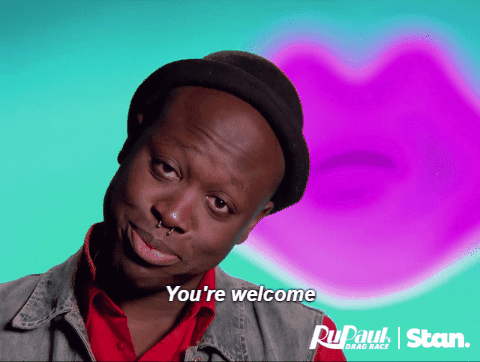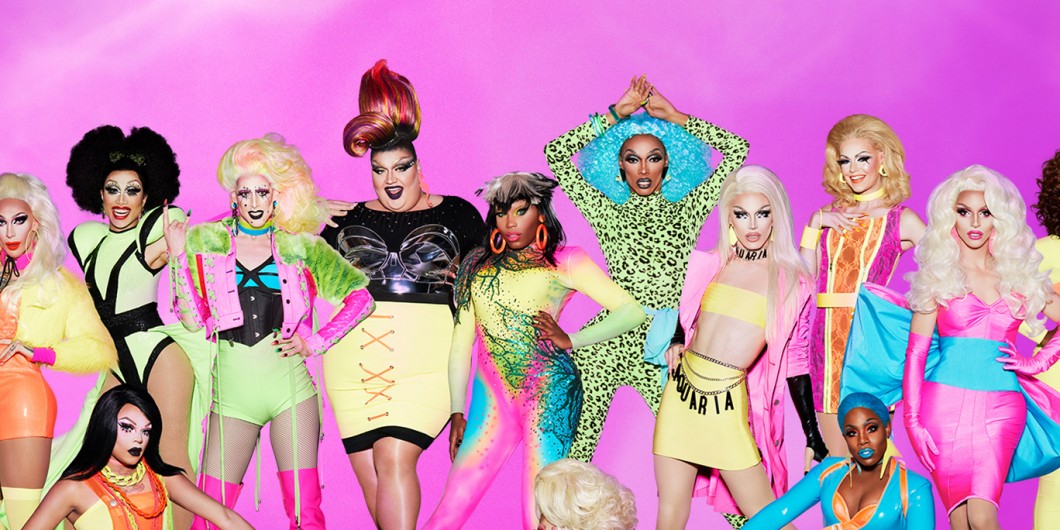(And a Queer parallel to make it all clear)
Where it all started
It was March, and my boyfriend and I were staying with a friend. Sharing living quarters had its charms: making dinner together, singing along to Leona Lewis and, most notably, discovering “RuPaul’s Drag Race” (RPDR).

A little herstory
Some context: this TV reality show, which premiered in 2009, puts the spotlight on 14 drag queens who compete to be the “Next Drag Superstar”. Each episode features various challenges, performances and runway looks.
This competition has greatly evolved over 12 seasons, including three “All Star” editions. In fact, the phrase “Lipsync for your… life” is as commonly recognized as the roses on “The Bachelor”.
What makes the participants so compelling? Their flamboyant personalities, of course. The exaggerated facial reactions, jokes that definitely cross the line and over-the-top drama definitely keep us hooked.
Feeling the love
Since I work in advertising, it is easy to grasp the larger picture. Each participant’s personal brand is key to their success on the show and like so many others, I was surprised by how quickly I began to adopt their expressions, mannerisms and snappy comebacks.
Gurrlll, drag queens own it.
With such well-defined personas, their total commitment to fans and strategic promotion of their personal brands, these queens have rocketed to the top of pop culture, scoring big partnerships and creative projects along the way. Let’s deconstruct what makes their personal branding activities so effective.
- Authenticity
- Engagement
- Monetization
- Reinforce your image
Your brand is an amplified version of who you are (your talents, skills, life path), so authenticity is key. It’s so blatant when someone is trying to be someone they aren’t. And people will notice—like they did with Laganja Estranja, who was “read” by the judges for taking on a persona that didn’t fit, burying her own personality under heaps of empty expressions and affectations.
Some queens know how to stick to their image. Like Kim Chi, whose name immediately references both her origins and her love of food. Her superpowers? Otherworldly make-up and making fantastical costumes.
Kim Chi respected her brand throughout every challenge during the season, which required breaking the rules, perhaps, but she was always on theme. Her unforgettable look for the hair challenge—a cartoonish lion with layers of wigs—is the best example.
If the queens of recent seasons have learned anything, it’s the importance of loving their community. In order to stand out, many made scandalous statements to shock and awe. Despite her mean-girl reputation, Phi Phi O’Hara attracted 406,000 Instagram followers; although she still lags behind the fan favourites Alaska (1.1 million follows) and Adore Delano (a whopping 1.4 million).
Other examples include Miss Fame, the queen of make-up tutorials like #PaintedByFame. Her reward for nailing it? Making over Marc Jacobs into a drag queen for a viral stunt.
In addition to social media, most queens also meet their fans at drag conventions or bar events, often offering exclusive experiences/products, etc. The most tireless among them, like Katya, make fans feel like friends.
But of course, queens can’t live on “likes” alone and need something other than passion to keep them warm. Sometimes they have to make money from that brand.

The real moneymaker? Swag!
A website is the best way to centralize all upcoming events and sell tie-ins, including traditional items like pins and t-shirts, as well as promote draws for outrageous photos or branded drag cruises. Once again, Kim Chi takes the cake.
For a more local example, we have the STM that sells a variety of decorative objects on the Metro station theme. The brand has cleverly leveraged social capital and a sense of belonging to extend its reach.
Like Chi Chi DeVaine says, “I don’t get ready, I stay ready”. Say yes to collaborations that reinforce the essence of your brand. The most outstanding example is the Werq The World Tour, a show featuring RPDR stars that has been selling out around the world. Although it’s promoted as a group event, each queen is given the room to self-promote too.
For Valentina, the Latino bombshell with European flavour, a double-page spread in Vogue Mexico made absolute sense. For MILK, the fashion-forward black sheep, it meant collaborations with Vivienne Westwood, Marc Jacobs, Madonna and more.
Others focus on their talents. Laganja Estranja gives workshops to teach others her famous “death drop”, while Alaska has chosen to spin her dark humour into a musical career.
Coming full circle
The examples are legion. Go no further than “Keeping Up With the Kardashians”, which helped its stars develop their own individual brands. While the Kardashian sisters are mostly famous for… being famous, Kylie Jenner is a reality TV personality, model, entrepreneur and social media star with her own make-up line, and her sister Kendall has become a darling of the fashion world.
As the current RPDR season progresses, I am more and more convinced that building a brand image takes time, patience and lots of “werk”. If you don’t believe me, look at Shangela, who survived the second and third seasons of RPDR to make a comeback this year. Although building her image has been a long, hard process, it’s important to never give up, to believe in yourself and to surround yourself with those who want you to succeed. Believe it queens, time and effort will come back to you twofold!

Related: Cash is Queen: As Tweens Flock to “RuPaul’s Drag Race”, Retailers Follow.
Article originally published in French on Infopresse.
Image from vh1


